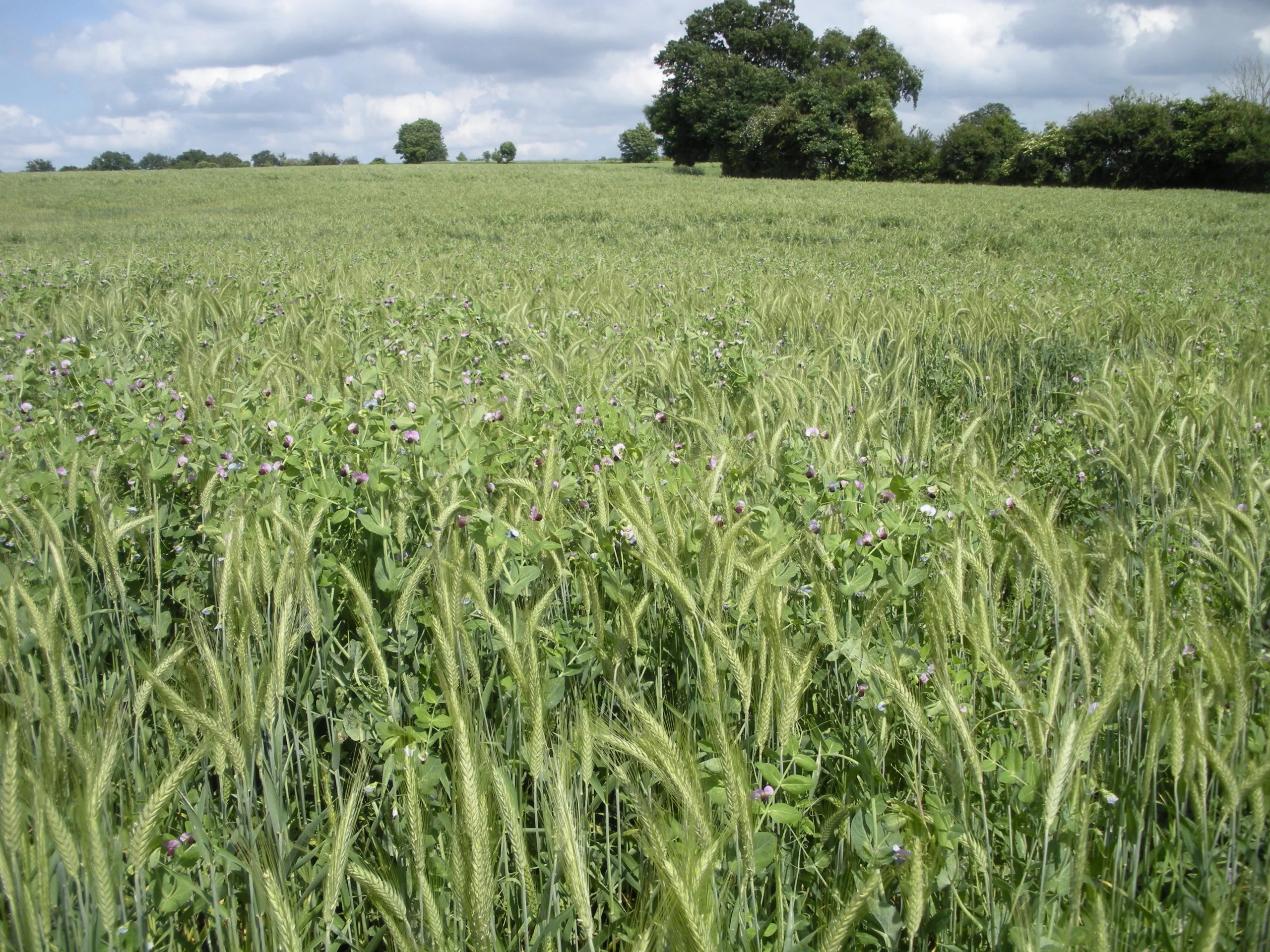Intercropping: technical itinerary of peas
Associating Species: A Winning Bet from an Agronomic Perspective
Crops for Food Production
At Agri Obtentions, we highlight the effectiveness of crop associations, an agronomic practice that has proven beneficial both for enhancing crops and for their strategic role in crop rotation. Crop association, a technique requiring precise know-how, is gaining popularity with the increasing demand for biomethane and early fodder. It thus attracts a growing number of farmers to this innovative method.
By associating crops, farmers aim for increased biomass production, in both dry matter and nitrogen matter, per hectare. They promote combinations such as triticale / oats / forage peas, or barley / protein crops. The selection of the appropriate variety is crucial, especially to counter lodging before harvest.

The association of crops to secure productions
In the context of organic agriculture, Agri-Obtentions promotes the association of cereal and legume crops to increase the protein content of cereals, a key quality often limited in organic practices.
In the context of organic agriculture, Agri-Obtentions promotes the association of cereal and legume crops to increase the protein content of cereals, a key quality often limited in organic practices.
The joint planting of cereals and legumes reduces the density of cereals. This helps reduce the nitrogen dilution effect, which is then better converted into proteins. In the long term, legumes fix atmospheric nitrogen, allowing for a reduction in external fertilizers during crop rotation.
The association of crops also improves soil coverage and hinders the growth of weeds. Thus, it ensures production stability with high protein levels in organic agriculture and increases the production of two marketable crops.
These associations are real strategies for securing harvests in organic farming and adjust to variations in nitrogen and water availability.
In an environment where nitrogen is limited, legumes predominate, while cereals prove more robust under water stress.
This demonstrates the adaptability and resilience of these associative systems.

Properly Managing the Planting of Associated Species
The choice of species and varieties should not be improvised. It must be optimized based on the outlets and objectives set (yield, earliness, companion plant, etc.).
The other prerequisite that determines the success of crop association is the planting. Different species have different requirements.
“It is recommended to sow cereals at a depth of 2 or 3 cm and legumes between 5 and 10 cm.”
Thanks to the new generation of cereal seeders, sowing 2 species becomes easy. Equipped with pneumatic distribution and a double hopper with a removable partition, they allow precise simultaneous planting of two species. Thus, the species will be placed row by row with different depths and densities according to the sowing lines.
These new generation seeders are also adapted for the planting of “companion plants” such as the example of rapeseed and faba bean with a very small TKW.
These types of crop associations can have several functions, such as controlling weeds and insects, acting as a tutor, nitrogen availability, etc.